By Robert Tate, Automotive Historian and Researcher.
Images courtesy of Robert Tate's Collection
Posted: 02.21.2018
The 1920s through the 1970s were a great period in the history of American automobiles, an era when the American automobile companies were creating great looking designs. Looking back at advertising from the 1930s to the 1950s, Chrysler captured the hearts and wallets of the American motoring public.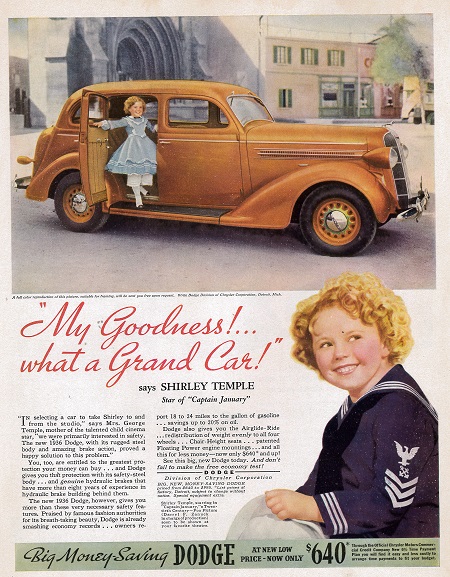
During the 1930s, when most Americans were dealing with the Great Depression, Chrysler was using well-known Hollywood actors to sell their products. The new 1936 Dodge models were promoted by the legendary child star Shirley Temple. “My Goodness! … what a Grand Car” the headline proclaimed, and Mrs. Goerge Temple, Shirley's mother, said “we were primarily interested in safety” when it came to purchasing the car.
The 1936 Dodge models were called the “Beauty Winner Line” and were great sellers on the consumer market. Tom A. McPherson, author of The Dodge Story, said “public acceptance of the 1936 Dodges was good and production was up. Dodge was able to maintain its position as the fourth bestselling car in the U.S, building a total of 274,904 cars this calendar year.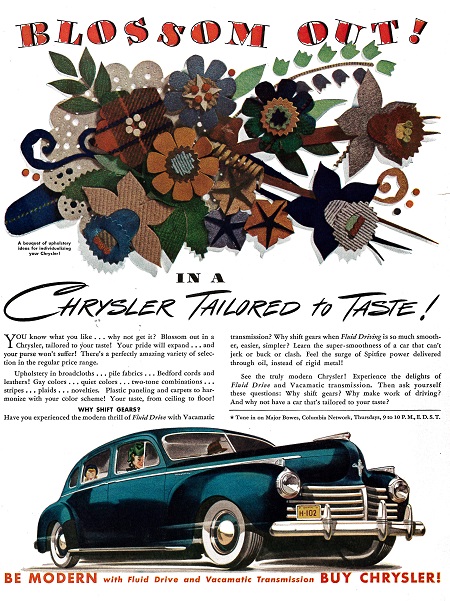
Another great advertising campaign was released in 1940-41, when Chrysler featured a great print advertisement headlined “Blossom Out in A Chrysler Tailored To Taste.” The ad featured Chrysler's engineering features, like Fluid Drive and Vacamatic Transmission. The 1941 Chrysler models were basically the same designs as the previous year, so upholstery highlighting Bedford cords and leathers was featured in the ads as well.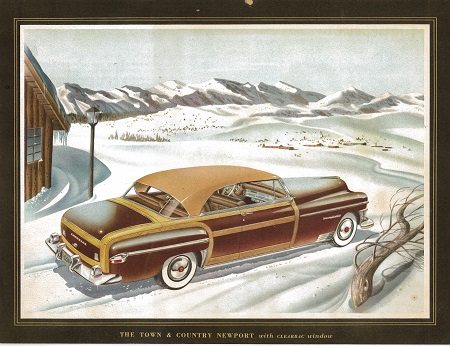
The 1950 Chrysler Town & Country illustration seen here comes directly from the 1950 Chrysler brochure. Chrysler’s 1950 models, the New Yorker, the Saratoga, and the Town & Country, were truly great looking automobiles. The illustration depicts a beautiful winter scene highlighting the vehicle’s features of hand-polished white ash woodwork, which many consumers sought. The brochure copy stated, “Truly, there is no car in America, or in the world, like the Town & Country Newport. It is alone in its distinguished design, its distinctive styling and its alluring beauty. It cannot possibly be mistaken for any other car.”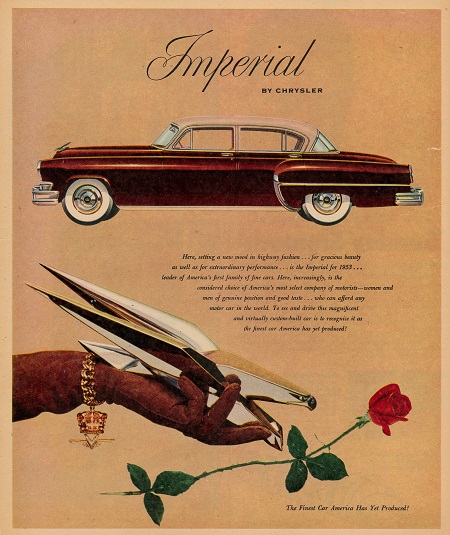
The next image shows a beautiful ad for a 1953 Chrysler Imperial from the Detroit News Pictorial Magazine of March 13, 1953. As a collector of automotive advertising, newspaper automotive illustrations are very rare and hard to find because most people did not save newspapers. The 1953 Chrysler Imperial offered the consumer beauty with a sloping eagle hood mascot which was a unique new touch for 1953.
During the 1950s, women were beginning to make up a larger percentage of decisionmakers for automotive purchases, and the automakers began to take notice. In 1955, Dodge had introduced a model called the La Femme to appeal to women. The La Femme was finished in pink and offered many accessories targeting women. Please see the MotorCities Story of the Week archive for “Celebrating 100 years of Dodge: The Dodge La Femme” from July 7, 2014. The ad pictured here headlined “Are You This Woman?” features a 1958 Plymouth Sport suburban station wagon. These models were popular and available in six or nine-passenger versions. The copy said, “Be free to go where and when you need to go in a beautiful new Plymouth.” 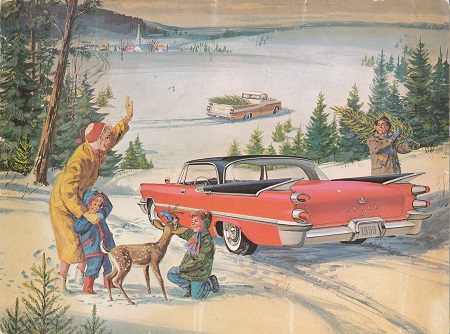
The last image depicts a family preparing for the Christmas season and shows a 1959 Dodge four-door hardtop model with Christmas trees along with a 1959 Dodge truck. The beautiful artwork was used on a Christmas card that was sent on behalf of M.C. Patterson, who was General Manager-Dodge Division and Vice President for Chrysler Corporation. This illustration was never used in a print ad, just for this Christmas Card only. In 1959, Dodge introduced a major restyled model line for its new products. Fins were higher and more rakish than earlier models. Dodge, like all Chrysler products for 1959, featured swivel front seats that became such a hit with women and were later copied by other automakers.
In conclusion, automotive advertising did more than sell cars to the American consumer. It helped shape our heritage and culture. The Golden age of motoring in the late 1920s and the early 1930s produced classic images of the era's luxury cars. Many ad agencies linked automobiles with romance, adventure, apple orchards or perhaps beautiful fall weather and great looking skies to sell cars. As we have learned, by the 1950s, some advertising campaigns were aimed specifically at women.. Even today, automotive advertising continues to move America.


